Wong Chong family of Cobar, New South Wales, taken about 1916:.png?timestamp=1618762574703)
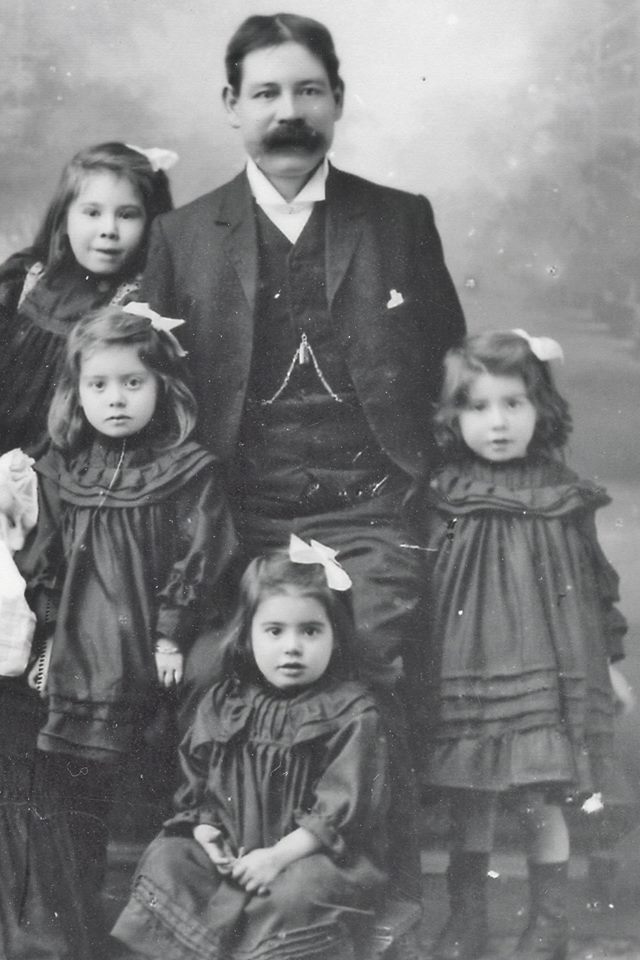
Castlemaine storekeeper and interpreter Charles Lee Suey and daughters. Verey Collection
Chew Kee arrived in Brisbane in 1887 when he was 15. His wife Chue Yung came to Inverell in November, 1902 about a year after federal immigration restriction applied. born in Inverell
Roger (8.5.1908), Eslie (10.5.1911), Marjorie (26.3.1914) and Albert (24.1.1918
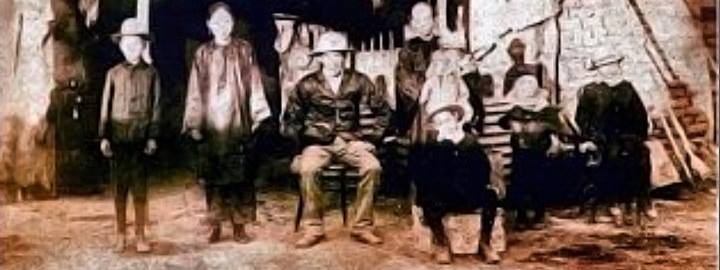
Yip Hoy Family (c 1902) outside their bakery/store in Sircom St Croydon
left to right: Yip Quang Jake (Jack or John), Yip Cum Gee (Cissy), Yip Hoy, Yek How nursing Yip Mei Li (May)
front: Yip Quang Mow (Charlie), Yip Quang Lum (George), Yip Quang Yake (William)
Missing is Yip Mud Gee (Maggie) then in Georgetown married to Ng (James Ah) Kee Her first child, James Jnr was born about the same time as her mother's last child, May
Possible meanings of Cantonese names
Margaret (Maggie) - Mudgee Mud = not a Chinese word but Mu Gee = Adorable branch 慕枝
Cissy - Cumgee Cum/Gum = golden Gee = branch 金枝
Liang Gee Liang Gee Bright /shiny branch 亮枝 or Liang Gee = Good branch 良枝
Gum Lin/Lein Gum Lin = Golden lotus 金蓮
May or Lilly possibly Mei Li = Beautiful plum. Mei Lin = Beautiful lotus 美蓮
Stillborn unnamed girl b.1904. Proposed name Hoi Lin = Victorious lotus 凱蓮
Jack - Quang Chet/Jak Guang Chet = Vast pool or lustre 廣泽
William - Quang Yake Guang Yake = Vast benefit/profit 广益
Charlie - Quang Mow Guang Mow = Vast riches /splendid 广茂
George - Quang Lum Quang Lum = Vast forest 广林
Still born unnamed girl b.1904. Proposed name Hoi Lin = victorious lotus
William Gee Kee and family. (Left to right:) Gladys, William, Florence and Wilfred.William Gee Kee and family. (Left to right:) Gladys, William, Florence and Wilfred.
Uncle Willy was born in Maytown on the Palmer River goldfields in 1896. In 1906 my great grandfather Tam Gee Kee took eight of his nine kids back to China as a permanent move. After he died in 1910, all the kids came back to FNQ. Uncle Willy came with his new wife Auntie Florrie.
When Willy's son Wilfred started dating a half-Chinese girl as a young man, Florrie was dead against it and forced Willy to take the whole family back to Canton in 1935 so that Wilfred could find a wife.
The second Sino-Japanese war broke out in 1937 which lead to WW2. The whole family was imprisoned for being from Australia. Uncle Willy died of cancer under occupation. During the war the whole family had lost their documents so had no proof they were Australian. They were not allowed back into the country.
In 1949 the Communists took over China and again the family was imprisoned for being from Australia. Auntie Florrie died on a communal farm. Gladys apparently tried to swim to Hong Kong and was never seen again. Wilfred married and had five kids.
During the Cultural Revolution his kids became red guard and were responsible for getting him imprisoned once again for speaking English.
Finally in the late 70s when China reopened again, the Gee Kee family tried to get Wilfred back to Australia but under the strict Australian immigration laws Chinese could only come if they they had a sibling, spouse, parent or child that was already an Australian. Unfortunately for him he only had uncles, aunts and cousins.
In 1980 the family arranged for his youngest daughter Phyllis to marry an Aussie Chinese called Harry Loy from Innisfail. She came out to Australia that year and once she gained citizenship, Wilfred finally made the return to Australia with his wife in 1986 (over 50 year after he first left).
When he returned he worked as a waiter at the newly opened Fu Wah Chinese restaurant in Tully, which was owned by Don Ng (father of my school mate Johnny Ng).
Wilfred managed to see two more of his kids and their families come out to Australia before he died in 1990. I always remember the day when we picked him up from the Townsville airport and his first words to me were "G'day little mate" in a thick Aussie accent despite being away for so long.- Shared from James Sing and TULLY IN THE 60’s 70’s 80’s AND 90’s Facebook page.

from James Sing in the TULLY THEN & NOW Facebook page.
Probably the most well known Chinese Australian family in Queensland... the See Poys. Many of the Chinese in Tully, including my own family used to sell their produce to them. This is Tom See Poy's story as told by my father. I'm not sure how accurate it is but if anyone can confirm the details that would be great. (James asked me to stress this is from his father’s recollection and he does not know how accurate it is. - Marjorie).
Tam Sze Pui came to Australia during the Palmer River gold rush from the same place as my great grandfather Tam Gee Kee so they could have been from the same clan or even related. His childhood was one of poverty and limited education. As a young man, he immigrated to Queensland with his father and brother in the hope of finding gold. He soon discovered that life was hard and dangerous on the goldfields. Changing his name to Tom See Poy, he decided to leave the Palmer and move to the town of Geraldton (now Innisfail) where many Chinese had begun moving to escape the hardships and disappointments of the goldfields.
At this time, anti-Chinese sentiment was very high in Australia. Competition in the goldfields between European and Chinese miners, and the use of cheap Chinese labour were the main contributing factors. Because of this resentment, legislation was enacted that prohibited Chinese from owning land. Under the law, only white British subjects could buy land; Chinese and other non-whites could only lease it. In the late 1800s, Far North Queensland was still greatly undeveloped, with very few settlements and almost no infrastructure. To encourage development in the area, the Queensland government gave out parcels of ten acre lots, but only white British subjects were allowed to apply.
The problem with the land in Far North Queenlsand was that it was covered in thick, dense rainforest. Clearing it was an arduous and expensive task. To solve this problem, the land owners came up with an ingenious idea. They would lease the uncleared plots to the Chinese for a cheap sum of one shilling per acre, per year. The Chinese would clear the land, but after one year the land owners would take back the land and lease it out for five pounds an acre! Because the Chinese only had one year to use the land, they started growing a crop that would enable them to turn a good profit in 9 to 12 months... the humble banana.
Tom and his brother cleared their first plot of land and grew their first banana crop in 1881, but quickly realised that they weren't going to strike it rich doing it that way. They started their own company that leased and cleared huge swathes of land and cultivated it for bananas. Within years Tom's company was the largest Chinese-owned business in Far North Queensland and was responsible for giving jobs to hundreds of Chinese immigrants. Soon, Geraldton had more Chinese residents than the state capital of Brisbane.
When the law finally changed and Chinese were allowed to own property, Tom bought his own farms and created a large family business. His department store See Poy and Sons became the largest department store in North Queensland, and sold everything from toys and shoes to groceries, furniture and cars.
Tom See Poy died in Sydney on 18th April 1926. He was honoured by the residents of Far North Queensland with one of the longest funeral processions in the history of the region. In 1981, Tom and the whole See Poy family were honoured by the Queensland government with a commemorative plaque for their contribution to the state and Tom's family home was added to the Queensland Heritage Register. Although mostly known in Far North Queensland as the owner of the regions largest department store, among the early farmers, he will always be know as the Chinaman who helped start the banana industry in Australia.

Group portrait of the Shing family Canterbury NSW 1909-10
This photo was taken in the studio of Cheun Chan of Shek Ki in Hung Shan, Canton
Harry Fay (Ah Fie Ping Kee) on behalf of his brothers Mew Bing Ping Kee, Mew Seven Ping Kee, Mew Lun Ping Kee all partners in Hong Yuen & Co of Inverell in 1926 was given permission for his mother, sister and her two sons to visit for a year.
In 1998 Ping Kee (Louie Mew Ping)and Ah Way took the 4 sons to China, and the sister was born there. Father died there in 1924
Ah Way mother
Mrs Kee Chun nee Louie Kee sister
Lawrence Kee Chun 10 nephew
Sydney Kee Chun 4 nephew

Rosena Constance Chan (nee Ah Poo / Appoo)
Rosena Ah Poo was born at the Ironbark Chinese Camp in 1875 to interpreter James Ah Poo and his wife Elizabeth (nee Heroult). She grew up in a large and well regarded family, and she married Bendigo fruiterer and businessman Samuel Chan on 14 March 1900 at the age of 25. The occasion merited comment in the Bendigo press, with the Independent reporting that “Miss Appoo, a native of Bendigo, was the daughter of the late Mr. James Appoo…who will be remembered as having been Chinese interpreter in the Bendigo law courts since the earlier days of the goldfield….[the bridal party] proceeded to the residence of the bride’s mother at Emu Point, where the wedding breakfast was partaken of. The bride was the recipient of many costly and handsome presents.” Unfortunately Samuel died relatively young, and Rosena was widowed in 1910 with five children. She continued to live in the family home in Myers Street until the 1950s. Rosena Chan is buried in Bendigo Cemetery's Methodist section with her husband Samuel.
In this photo Rosena is pictured with her children Florence, Hilda, Sylvia, Len and Norman.
(AP0197 Collection Golden Dragon Museum)
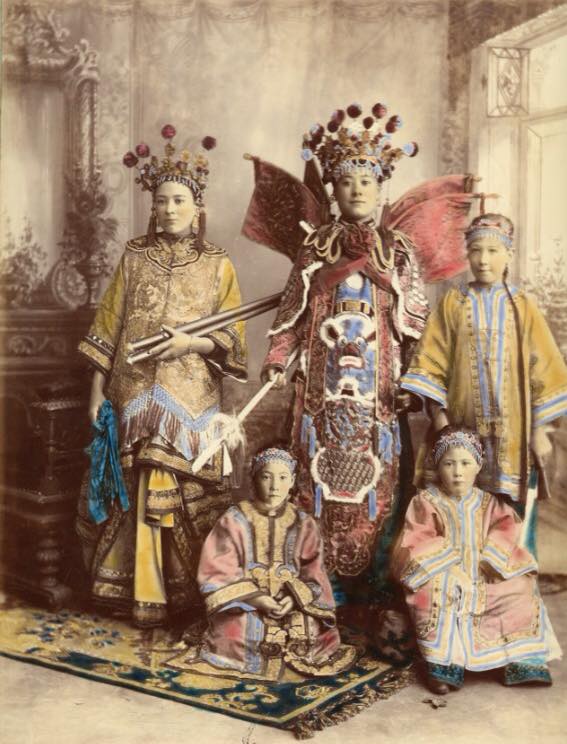
Mong family in traditional processional costume circa 1890.
The photo was taken in Ballarat's photographic studio, Yeoman & Co.
Some of these exquisite costumes will be on display in our upcoming exhibition, Re-awakening the Dragon, opening 5 October.
We've been able to explore our Chinese processional collection thanks to
Deakin University - Arts and Education and Victorian Chamber of Commerce and Industry for supporting our curatorial and collections internship.

James Sing, a 4th generation Chinese Australian from Far North Queensland, is trying to piece together his family history.
His great grandfather Tam Gee Kee arrived at the Palmer River goldfields in the 1870s. James has photos of people who may be a family from Melbourne; are they descendants of a sibling of Tam Gee Kee? He's very keen to identify this family.
The early Chinese families of Australia were very closely connected, and there is a possibility that someone will recognise the people in the photo (which is from the late 1920 or 1930s). Please get in touch if you can help.
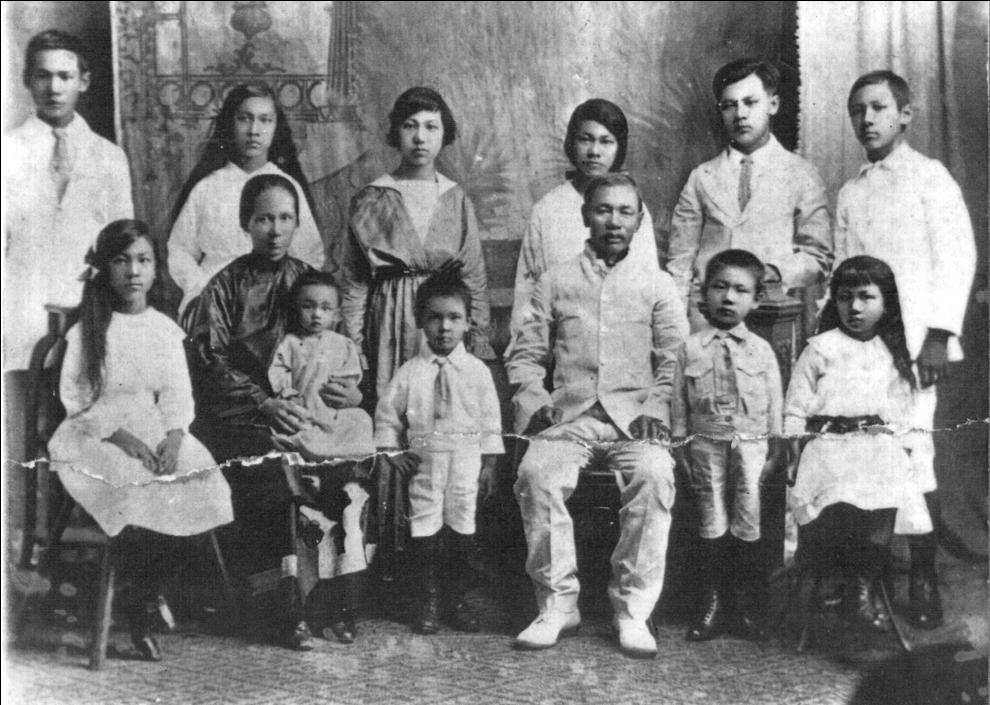
Sing Family of Thursday Island:
From James Sing
Hi Anthony. I thought you might be interested in this photo of the Sing family in Australia. I haven't connected all the names to the face yet. I do know that the Mum and Dad are my great grandparents Lily and George. The guy on the far left is Johnny Sing. The guy second from the right is my grandfather, James Sing, and the little boy is Roy Sing from Innisfail. I'm not sure which one is Louie Sing, which is the lady you are related to through marriage.
Old family photos like these will really help to extend our family tree. Treasures like this are invaluable, for once we piece the names and important dates together, we'll be able to pass this on to future generations. Look at the matriarch, dressed traditionally in silk tunic and pants with Quin- fashioned coiffure --shaved forehead with the mandatory Manchul plait coiled into a bun at the back; the patriarch Westernised, no queue, in British tropical whites; the girls in Edwardian dresses, where a generation earlier they would be decked out in silk. What were the couple's full names? Other Cantonese would have called her by her fathers' clan name: was his name Sing a given name or a clan name? Where the kid's given traditional names as well ?Were any of the boys educated in Canton?
Thanks to Estelle and Mel Kingsley (daughter and grand-daughter of Louisa Sing) the children have been identified:
from back left, clockwise: John, Louisa (Louie), Lily, Cecilia, (Lizzy) Jimmy, Arthur (front row right to left) Linda, David, Bill, Roy and Emily
Mel Kingsley They were all given Chinese names at birth but were known by their western names. My grandmother is Louisa / Louie was her nickname but her Chinese name was Chili - pronounced Chi Lee. Aunty Emily's Chinese name was Hen Lee.
Mel Kingsley Great grandfather (father in photo) was known as George Sing & Great Grandmother (mother in photo) name was Ah Bow Lum Sing.
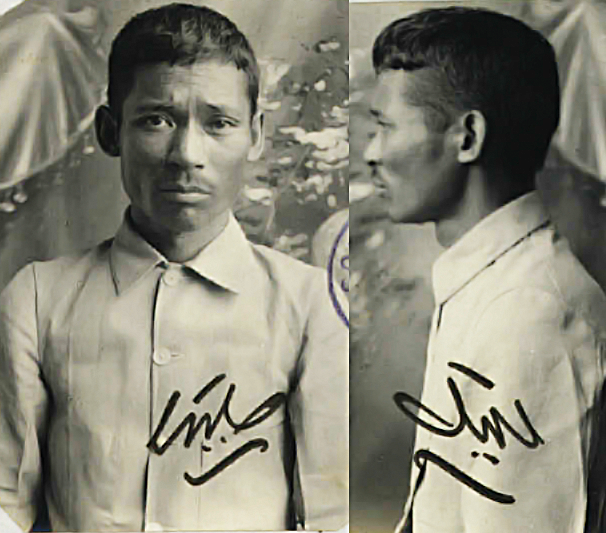

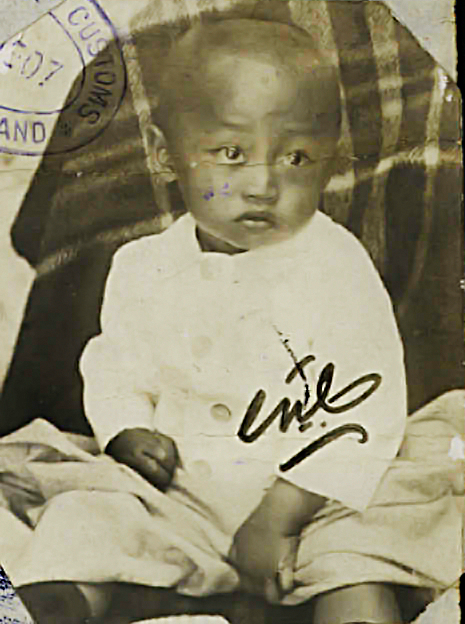 J3136.1907.234TorakichiOkiJapan31(JapanYAWATAMARU22.8.1907ThursdayIslandNIKKOMARU28.4.1908 (1).jpg1907.235
J3136.1907.234TorakichiOkiJapan31(JapanYAWATAMARU22.8.1907ThursdayIslandNIKKOMARU28.4.1908 (1).jpg1907.235
TorakichiOkiMrsSonHideoOkiKumamotoJapan30(SonHideoOkiJapanYAWATAMARU22.8.1907ThursdayIslandNIKKOMARU28 (1).jpg
1907.235HideoOki(1.3YAWATAMARU22.8.1907ThursdayIslandNIKKOMARU28 (1).jpg
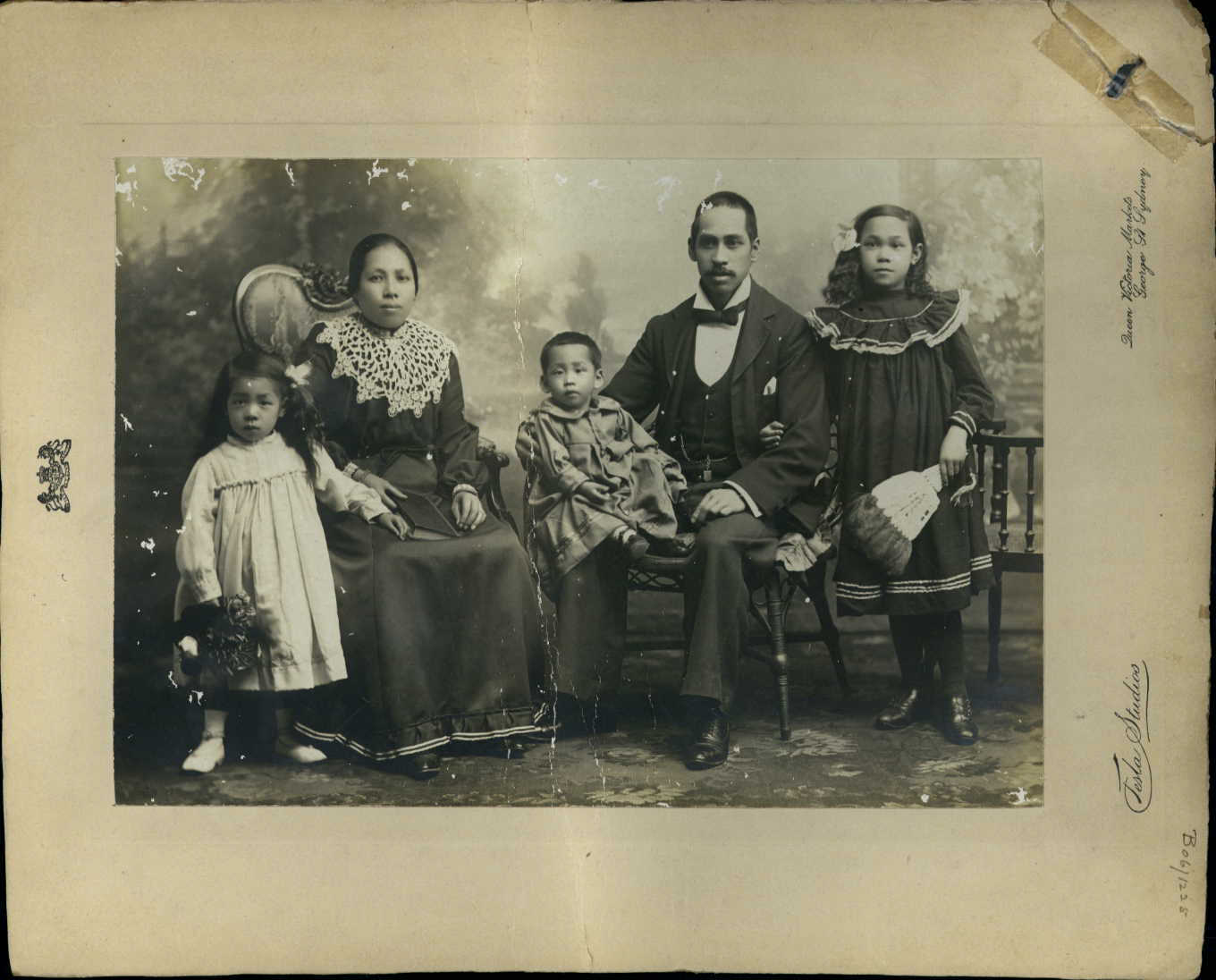
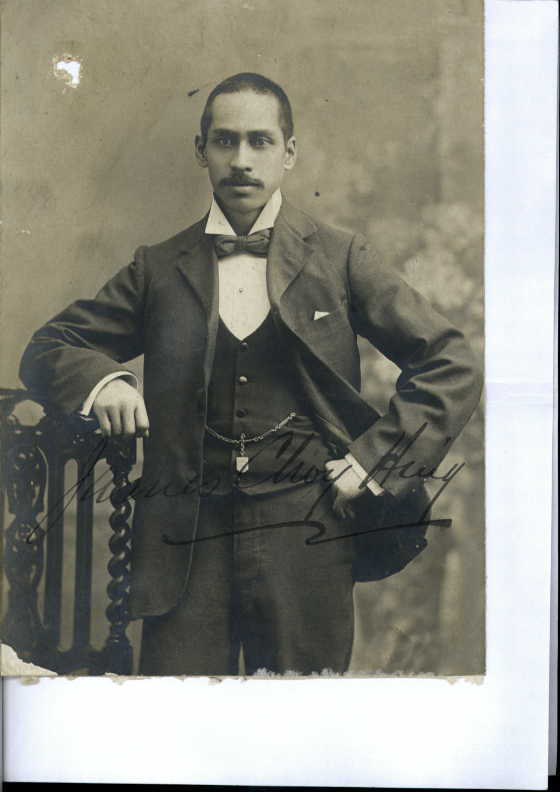


NAA: SP244/2, N1950/2/4918
Choy Hing family photograph noting adopted child Pauline Ah Hee, James Choy Hing, Mrs James Choy Hing,2 of James Choy Hing's children and Pauline Ah Hee
James Choy Hing b.1869 arrived 1889Merchant Daughter 7, son 4, adopted daughter 12 500 pounds equity business 20 Campbell St
Fanny Choy Hing b.1879 canton 18 arrived in Sydney Son 4y Daughter 6y 10 Alberta St Sydney
Pauline Ah Hee b. Dubbo1894
Daphne
0417 655 233

Hukam and Utcher Singh
Father Kwan Ah Shem, Tea Merchant
Brother See Cheng

Ying Lan or Elsie Pon b.18.10.1896 (m.See Fun Shem) and Nun Han Pon b.22.10.1911, 199 Little Bourke St Melbourne. Father Cheok Lan, Storekeeper aka Leng Lee Sister Ying Lan Brothers Fon Tuck and Sam Chin



Wing Sing, Foung Young, or Ah Young (depending on the source) was generally known to her non-Chinese neighbours in Eaglehawk as Mrs George Young. She had come to Australia as a teenager in 1885 to marry En Young Fun, a successful mining entrepreneur and former hotel keeper. Her husband had anglicized his name to George Young, and their six children were all registered under that name. The Young family home was in Caldwell Street on Eaglehawk's Specimen Hill. In this picture Mrs Young is pictured with baby Frank and daughter Clara, a detail from a larger photo in which she was posing with the rest of her family at John Lay's photographic studio in High Street, Eaglehawk. Both she and her husband were from Jangsing county in Guangdong province, and it was to George's home village of Ngar Yew that they returned in 1900. En Young Fun passed away soon after in 1901, and their children later returned to Eaglehawk as young adults where their uncles Hing Toe and Bark Loon were still working in the mines. Mrs Young is believed to have stayed in China.
(AP0007 Collection Bendigo Chinese Association)
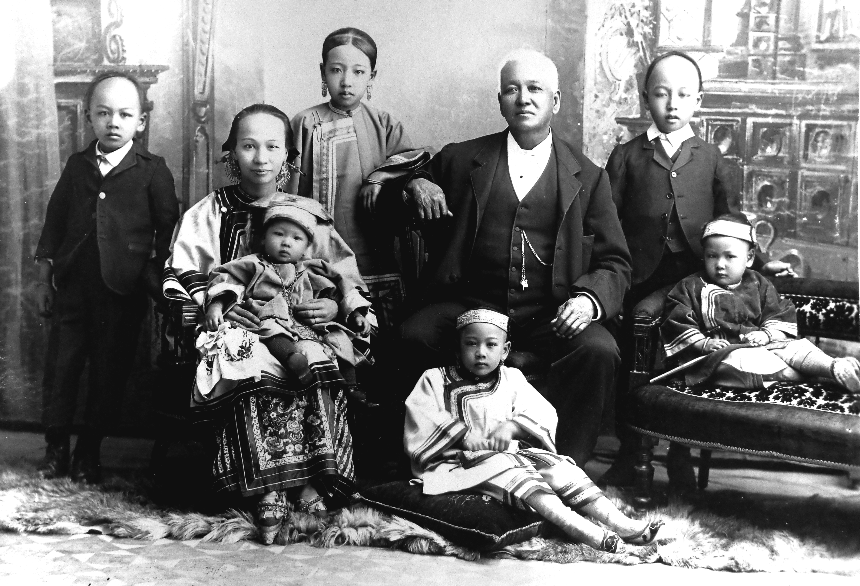
This photo of George Young (En Young Fong) and his family was taken before they returned to the village of Gar Yew in 1900. He made his fortune as a sand tailer on the Bendigo goldfields where he employed 70 labourers at Eaglehawk retrieving gold. His eldest daughter Clara used this photo to establish her identity when she returned to Victoria in 1917.
Clara is the girl standing, Harry is the eldest boy then Willie, Frank Mary and Lily She remembered little of the town where she was born as her father prohibited the children from leaving their home and tutors visited to educate them.
George Young
Born c. 1835
Guangdong Province, China Died c. December 1901
Occupation: mining manager Alternative Names•En Young Fun (full Chinese)
•Kee Yung (full Chinese (surname only))
•Zuo Zhi Yang (pinyin)
•左治羊 (simplified Chinese characters)
George Young arrived in Australia in 1856-7 and settled in Eaglehawk where he was the mining manger in a firm that extracted gold from tailings using cyanide. In 1917 it was recalled by the Eaglehawk manager of the Commercial Bank of Australia that he employed about 70 men in his firm. In 1884 he successfully applied through Sergent John Gleeson for Victorian naturalisation. His application was processed along with five others.
According to an article in the Australasian he was 'highly respected' in Eaglehawk for his 'uprightness and integrity'. The Bendigo Advertiser described him as being 'held in high esteem' and being 'a kind and benevolent man'. He made donations to the Bendigo Benevolent Asylum and Hospital on a number of occasions and was involved in organising the Chinese performance in the Bendigo Easter Fair in 1879.
In June 1900, after his elder brother's death in 1899, George Young returned to China at his father's request to manage the family property. His Chinese-born wife and six Australian-born children accompanied him. Prior to his departure a portrait of the Young family was published in the Australasian and given to prominent citizens of Eaglehawk. A banquet was also given by the citizens of Eaglehawk to see the family off and George Young was presented with an illuminated address.
The Bendigo Advertiser were quick to publish a glowing eulogy of his life after George Young died in China in December 1901.
Sources used to compile this entry: 'Prosperous Chinese miner [photograph]', Australasian, 31 March 1900, p. 703; Victorian Births, deaths and marriages; NAA(Vic), MP56/12, item 6; NAA(Vic), A712, 1884/B4266; NAA(Vic), B13/0, 1917/3260; Personal communication, Ray Wallace, 26 November 2004; Bendigo Advertiser, 23/5/1876, 23/12/1901 (courtesy Bendigo Golden Dragon Museum Bendigo Advertiser index).
Prepared by: Sophie Couchman, La Trobe University
Young, Clara (1888 - )
• Young, Frank (c. 1899 - )
• Young, George (c. 1835 - c. 1901) Father not born in Australia - aka Eng Young Fung
• Young, Harry (c. 1893 - )
• Young, Lily (1896 - )
• Young, Mary (1894 - )
• Young, Mrs (c. 1868 - ) - Mother may not have been born in Australia
• Young, Willie (1890 - )
Births
YOUNG Clara
Father George Mother Wing SING
At Eaglehawk 1888 Reg#28843
YOUNG Frank
Father Geo Mother Foung YOUNG
At Eaglehawk 1899 Reg#2600
YOUNG Harry
Father George Mother Wing SING
At Eaglehawk 1893 Reg#3196
YOUNG Lillie
Father Geo Mother Foung YOUNG
At Eaglehawk 1896 Reg#19390
YOUNG Mary
Father Geo Mother Mary YOUNG
At Eaglehawk 1894 Reg#28731
YOUNG William
Father Geo Mother Wing SING
At Eaglehawk 1890 Reg#31889
The children's birth certificates would have the ages, places of birth of the parents along with the date and place of their marriage.
https://online.justice.vic.gov.au/bdm/index-search?action=purchaseImage
The Bendigo Advertiser 15 May 1900
EAGLE HAWK
A well-known and respected Chinese resident, Mr. George Young, is on the eve of taking a trip to China with his wife and family, and in our advertising' columns he says "good bye" and returns thanks to his old friends for kindness shown to him. A meeting of Mr. Young's friends will be held on "Wednesday night" to take steps to formally wish him farewell. He has been a colonist for over 50 years, and in this district has always shown a charitable and good natured interest in local movements.
http://prov.vic.gov.au/index_search?searchid=42
The following departed Victoria on the EASTERN for Hong Kong via Ports
YOUNG Clara 11 years
YOUNG Frank 1
YOUNG George 62 years
YOUNG Harry 7 years
YOUNG Lily 3 years
YOUNG Mary 5 years
YOUNG Nan 32 years
YOUNG Willie 9 years
The Bendigo Advertiser 13 Sep 1901
EAGLEHAWK
A few days ago a prominent resident of the borough received a letter from a former Chinese resident, named George Young, who is now residing in the interior of China. The writer resided in the borough for about 25 years, and when, he was going away, about two years ago, the residents presented him with an illuminated address as a mark of the respect in which he was held by them, he sends his best respects to all his friends, and says that one of his sons is engaged to be married. He states that if China was under British law it would be a good country. He also states that robbers are plentiful in China, and in addition to keeping watchmen day and night to protect him, he has to be always well armed himself.
Bendigo Advertiser (Vic. : 1855 - 1918) |
Wednesday 23 December 1885 Page |
The company than separated.
Marm Deen Family
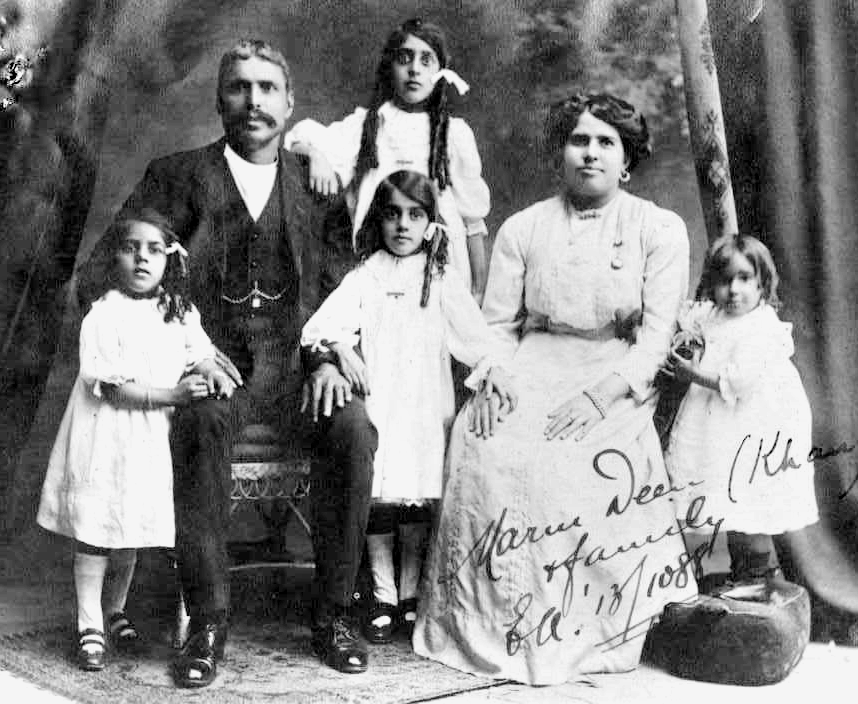
Gock Quay Family, Surry Hills, Sydney
Paul Gock Quay was born in Canton in 1878 and arrived in Australia when he was 12. He spent 3 years in Parramata, 6 in Hay and Sydney 7, where his occupation was Fruit Merchant, Commission Agent and Green Grocer. In 1903 he listed his financial interests as a property in Tamworth worth 400 pounds and a business in Sydney worth 600 pounds. He was single at the time but went to China to pursue business interests and bring his fiance (wife?) out with him.
He was one of 8 (or 15?) partners of Wing On and Co with an annual turnover 49,000 pounds. He was a shareholder in Hop Chong & Co,Hay and Yow Yee,Tamworth, Western Confectionary Co Sydney. He lived with his wife Rose and 7 children at 8 Mary St Surry Hills. His 2 brothers were also partners, one a general storekeeper at Moree Pen Kee & Co. His financial interests amounted to over 5000 pounds when he sponsored his nephew, Gock Lum Shong,,12, to come to Sydney for his education. Wing On Co, well as its Sydney premises, had country stores and a banana plantation in Fiji.
Louie Gung Family Melbourne :Yun Ping Hee Yu 32, Victor Ting Quong 6.9, Allen Ming Quong 5, Ack Dorothy 3.9, Samuel 1.10, Meeoy Louey Gung, Elsie 3 weeks not included. Louie Gung was a partner in the Furniture Manufactory of with his brother, Harry.
Sydney Louey Gung, taken in Australia, in the 1930s-1940s. Sydney Louey Gung was born in Canton, China in 1880 or 1878. It is thought that he first arrived in Victoria around 1900, and established a laundry business in Bendigo. He eventually established the Geraldton Fruit Company, which he ran with his family until the 1950s. In 1912 he returned to China and married Yun Ping Louey Gung, with whom he had seven children. Throughout the 1920s and 1930s he frequently travelled between Melbourne and China. He passed away in 1954 and was buried in the Melbourne Cemetery. The Gung family collection documents their experiences of immigrating and living in Australia from the 1920s to the 1960s and the gradual easing of the White Australia policy.
In 1912 Sydney had married , with
whom he had seven children. Yun Ping was born in Celestial Avenue,
Melbourne on 8 February 1890.The children were Maisie, Dorothy, Grace,
Christine, Victor, Samuel and Melbourne.

DRAFT:
Sam War Family Warwick
Chun Tie Family Georgetown Croydon Normanton and Townsville
Kwong Sue Duk Kee
Kwong Sue Duk (1853-1929): His Life and Family in Australia
By Rosalie Hiah, Kwong Sue Duk Foundation (June 2001)
Kwong Sue Duk was a prosperous and generous Chinese gentleman who had four wives and twenty-four children, and made Australia his chosen home, during and after the nineteenth century northern Australian gold rush period.
Kwong Sue Duk was born in Guangdong Province, China, in 1853 and ventured abroad to the California goldfields at an early age to seek his fortune. After several years, he earned enough money for his family and passage home to Toishan, China, then embarked on an education in Traditional Chinese Medicine. In 1874, Kwong Sue Duk married his first wife, Gee An Gow.
In 1875, after the birth of his first son (Kong Sing), Kwong soon heard of the gold rush of Australia and took a ship to Cooktown, North Queensland. He made several trips home to China and in 1879 a daughter (Jon Gee) was born. In 1882, Kwong arrived in the prospering township of Southport in the Northern Territory, where he eventually established a successful general trade store and real estate enterprise, operating under his business name, Sun Mow Loong. He became well respected and influential amongst the Chinese and European communities and was consulted over many matters concerning the Chinese.
In 1884, Kwong Sue Duk married his second wife, Chun Ngor Gwei, and obtained his naturalisation certificate in Australia. Kwong moved to Palmerston (early Darwin) and in March 1887 he met and married his third wife, Yuen Yuk Lau. He returned to China and another daughter (Toy Mee) was born to his first wife. Not long after the birth, he travelled back to Australia to tend to his thriving businesses and to buy a number of rental properties. In 1888, Kwong's third wife gave birth to a daughter, Ly Kin.
He returned to China in 1889, and subsequently brought out his first wife and three children to Palmerston, where she later bore him another daughter (Sum Gwai). Kwong and his three wives lived in harmony and supported the family together. Over the next twelve years, eleven more children were born - Thomas, Edward, Leslie, Elsie, Fred, Lim, Maizie, William, Kathleen, May and Lily. By 1902, there were sixteen Kwong children. Kwong prospered well in the remote Northern Territory, purchasing rental properties and at least five large gold mining leases.
In January 1897, a tropical cyclone damaged much of the town, including Kwong's properties. His first wife had difficulty adjusting to the harsh conditions and in 1898 he travelled with her to China where she chose to remain with their four children. In 1899, Kwong met and married his fourth wife, Wong Kwei Far, and returned with her to Palmerston.
The cyclone of 1897 and the dwindling economy of the Northern Territory had left Kwong Sue Duk in a poor financial state and in 1902 he sought relief in the growing economy of the Cairns region in North Queensland. The family set up a store and business in Cairns where he sold mostly Chinese goods. In the back of the store he had an office where he dispensed Chinese herbal remedies. Displaying their respect for him, both Chinese and European patients called him 'Dr Kwong'. Whilst in Cairns, five more children were born, Harry, Annie, Maud, Victor and Kong Won, to third and fourth wives. Kong Won died at an early age and to compensate for this loss, Kwong later adopted Violet and her brother, Lawrence.
In 1907, Kwong Sue Duk and his large family boarded a ship for Hong Kong to visit his family and to select suitable wives for his sons. In 1909, Ida, the youngest of the 24 children, was born. He returned in 1910 to settle in Townsville, Queensland, and in 1913 most of the family followed. Kwong established another successful Chinese herbal medicine practice in Little Flinders Street.
In 1917, Kwong made another major move to Melbourne, the thriving capital of Victoria, where a large Chinese population existed, with more eligible bachelors for his daughters (who were now of a marriageable age). Kwong Sue Duk continued his herbal medicine practice in Melbourne and country Victoria, including the townships of Ballarat and Bendigo.
Whilst the children were establishing their own lives, wives two, three and four moved to stay with them, and Kwong Sue Duk travelled to visit them all. In 1925, at the age of 72 years, he visited his son in Shanghai and his family in Hong Kong. In 1927, he returned to Melbourne to visit his children and their families, and then retired to live in Townsville where many of his eldest children had settled. He continued with his herbal medicine practice from Townsville until he died at the age of 76 on the 17th February 1929.
Many of the children of Kwong Sue Duk established careers and families in North America and South East Asia. However, a large proportion of the descendant families settled in Australia, and through the years have played important roles in the development and colour of the Australian community. Kwong Sue Duk's descendants now number around 860, and include five generations spread across eleven countries of the world.
SOURCES:
Rosalie Hiah and Warren Lee Long, 'Kwong Sue Duk' in Northern Territory Dictionary of Biography, Vol.3, 1996
Nui Bo and Victor Kwong, 'Biographical Sketch of Kwong Sue Duk' 1982.
Nom Chong Family Braidwood Sydney
Shoong Foon Nom Chong migrated to Australia
from China in the 1860s and ran a successful store serving the
goldfields of Mongarlowe, he later opened two stores in Braidwood.
Together with Quong Tart he founded the Oriental Bank, which had
branches in Araluen and Braidwood. The bank was involved primarily in
buying gold and exporting it to China. Shoong Foon’s brother, Chee Dock,
joined him in 1877, and he inherited and subsequently extended his
brother’s businesses.
In the 1920s and 1930s the Nom Chong family
diversified into trucking and owned one of the first service stations in
Braidwood. They had a fleet of three trucks, which ran between
Braidwood, the south coast of New South Wales and Sydney. The truck door
is a material remnant of one aspect of the extensive business interests
of this entrepreneurial Chinese Australian family.
One of Shoong
Foon’s sons, William Nom Chong, established a large market garden
business in Goulburn. William’s son, Lionel Nom Chong, owned several
businesses in the district and resided in Canberra until his death in
2001. Their long-term business association with the region – nearly a
century, from the 1860s to the 1950s – is an important story of Chinese
migration into the region.
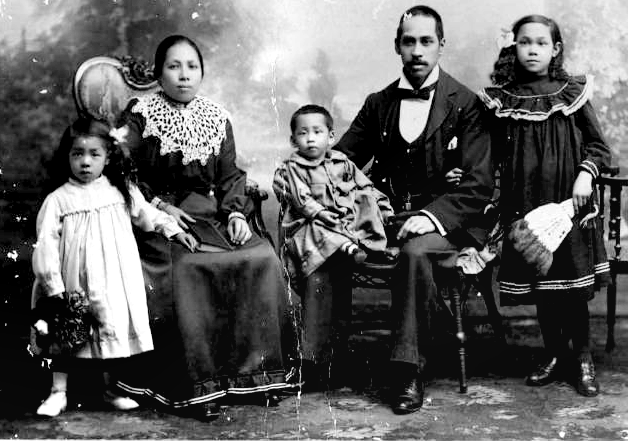
A friend in Sydney, Wiillie,Mrs. Jung Luk, Harry
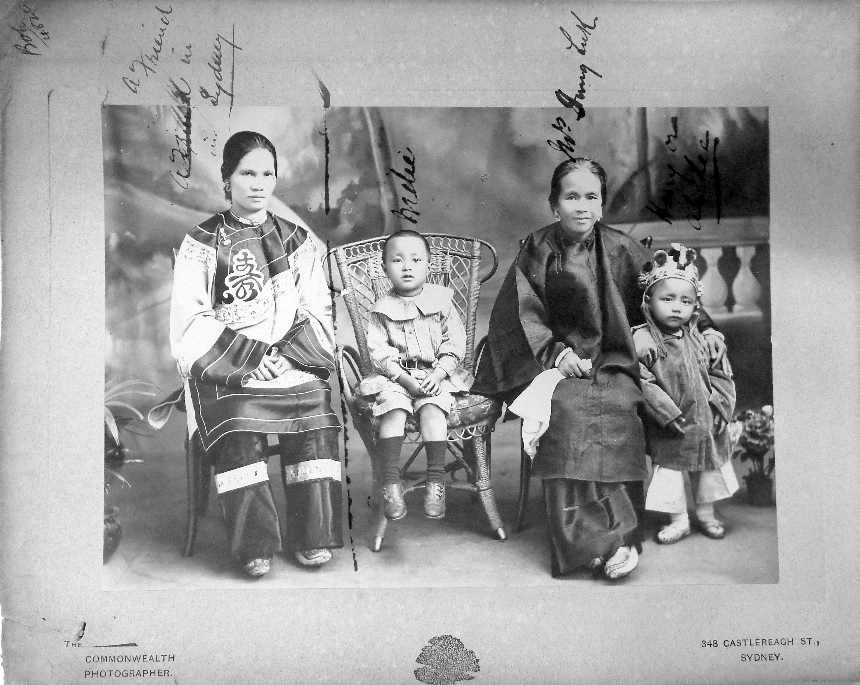
Willie, Charlie, Eva and Harry Hin

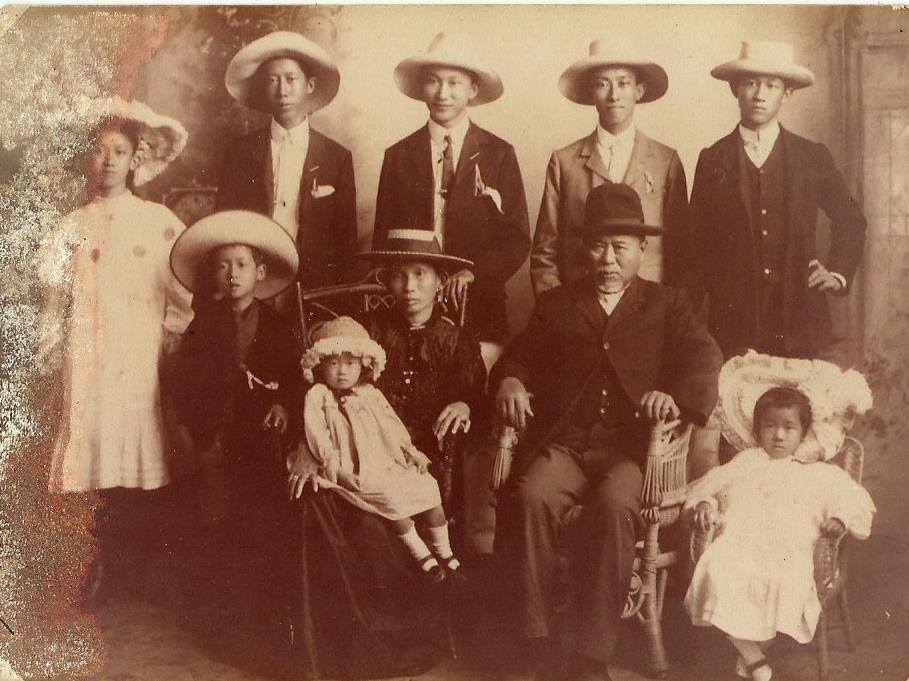
Back: Ellen, Henry, Patrick, Willy, Jack.
Front: Albert, Lily, Hang Fann, Tam, Maud
Missing: Charles
Tam Gee Kee (1841-1910): After his family were killed by Hakka militia during the territorial wars of Canton, he sailed to Australia to make his fortunes. He operated several businesses and became the most respected Chinaman on the Palmer River.
Hung Fann (1866-1917): After being kidnapped as a child, she was put into slavery and was brought to the Palmer by the richest Chinaman on the Palmer, James Ah Fun. Tam won her in a mahjong game and married her the following year.
Patrick Gee Kee (1885-1956): He was the first Chinese boy born on the Palmer River goldfields. As a young man he was one of the pioneers of the Babinda region and quite a powerful man in the FNQ sugar industry. He died of a heart attack during a cane growers AGM. Married to Jessie Kwong Kee (a halfie), his kids were Doris, Valmai, Iris, Thelma, Roy, Cedric, Elva, and Audrey.
Willy Gee Kee (1886-1943): He was one of the partners of the South Johnstone Gee Kee store. At the beginning of WWII, despite warnings from his brothers, he took his family back to China for a short trip. He was imprisoned by the Japanese and died in China under occupation. Due to loss of documents and the white Australia policy, his family could not return to Australia. Married to Chinese born Florrie Chen, his kids were Gladys and Wilfred. In 1986 Wilfred finally returned to Australia with three of his five kids.
Henry Gee Kee (1888-1956): After the death of his younger brother and closest friend Charles, he became mentally unstable for the rest of his life. He married in China but left his wife and two kids to return to Australia where he lived with Patrick Gee Kee on the Babinda farm for the rest of his life. His kids were Wai Chi and Wai Lin of Hong Kong.
Jack Gee Kee (1890-1957): Was the main partner of the South Johnstone Gee Kee Store and a local champion cricket player. Married to Jessie Sou San, his kids were Hannock, Connie, Glenda, David and Timmy.
Ellen Gee Kee (1892-1933): She married a rich Chinaman in Canton who she later divorced due to his infidelity. She brought her youngest sisters back to Australia in 1918. Married James Sing (my grandfather) but died a few years later of cancer.
Charles Gee Kee (1893-1803): At the age of ten he was playing on the Cairns wharves. After some white kids threw his hat into the water, he tried to retrieve it and was pushed in and drowned.
Albert Gee Kee (1898-1962): Was previously married in China but divorced and moved back to Australia. Was a partner of the South Johnstone Gee Kee store and the sole owner of the Innisfail Gee Kee store. While driving his tractor on his South Johnstone canefarm, the tractor rolled down an embankment and he was killed. Married to Elizabeth Sou San, his kids were Ronald, June, Neville and Donald.
Maud Gee Kee (1900-1984): The last to be married in the family, she spent most of her younger life tagging along with her older sister Ellen. Three years after Ellen died, she married Ellen’s widower James Sing of Tully. She had three sons… George “James” (my Dad), Alfred, and Robert.
Lily Gee Kee (1904-1995): After returning to Australia she married Innisfail man Charles How Kee (owner of the Innisfail How Kee store). After moving to Brisbane, Charles died of cancer quite young and she raised her teenage kids alone. Her kids are Joy, Rae, Fae and Charles.
Despite having such a long and rich history in the FNQ region, there are unfortunately only a few of the Gee Kee family members still in the area. George Sing of Tully, James Sing (myself) of Cairns, Glenda Lim and daughter Andrea of Cairns, and Phyllis Loy of Innisfail. The remaining extended family are all over the place but mostly in South East Queensland.
- Submitted by James Sing.
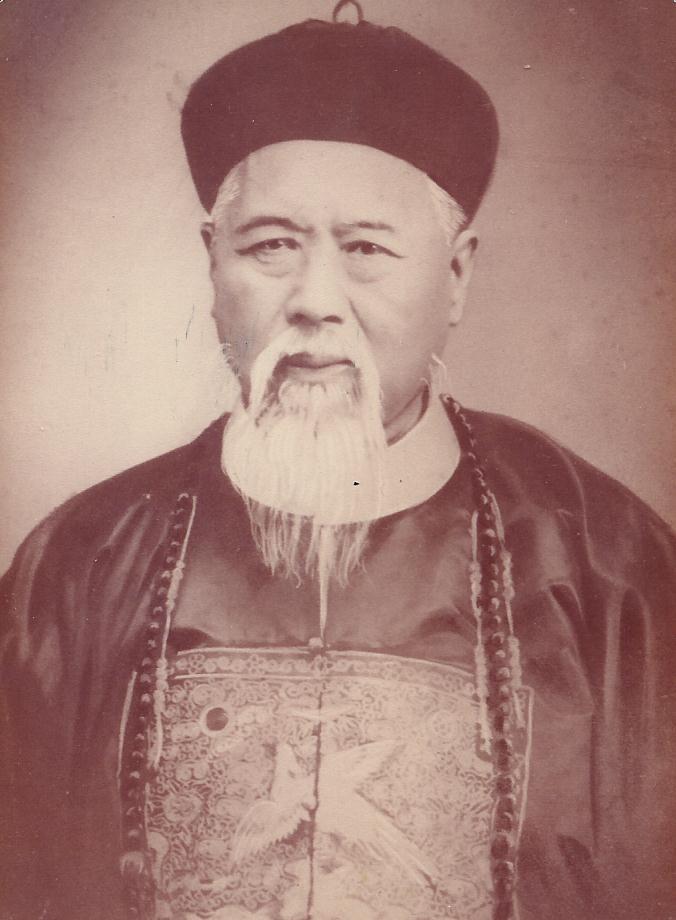
Tam Gee Kee
